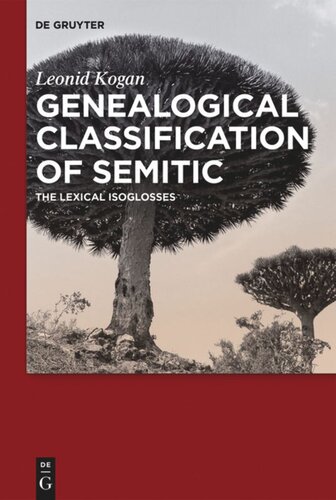

Most ebook files are in PDF format, so you can easily read them using various software such as Foxit Reader or directly on the Google Chrome browser.
Some ebook files are released by publishers in other formats such as .awz, .mobi, .epub, .fb2, etc. You may need to install specific software to read these formats on mobile/PC, such as Calibre.
Please read the tutorial at this link: https://ebookbell.com/faq
We offer FREE conversion to the popular formats you request; however, this may take some time. Therefore, right after payment, please email us, and we will try to provide the service as quickly as possible.
For some exceptional file formats or broken links (if any), please refrain from opening any disputes. Instead, email us first, and we will try to assist within a maximum of 6 hours.
EbookBell Team

0.0
0 reviewsThis volume is the first of its kind to offer a detailed, monographic treatment of Semitic genealogical classification. The introduction describes the author's methodological framework and surveys the history of the subgrouping discussion in Semitic linguistics, and the first chapter provides a detailed description of the proto-Semitic basic vocabulary. Each of its seven main chapters deals with one of the key issues of the Semitic subgrouping debate: the East/West dichotomy, the Central Semitic hypothesis, the North West Semitic subgroup, the Canaanite affiliation of Ugaritic, the historical unity of Aramaic, and the diagnostic features of Ethiopian Semitic and of Modern South Arabian.
The book aims at a balanced account of all evidence pertinent to the subgrouping discussion, but its main focus is on the diagnostic lexical features, heavily neglected in the majority of earlier studies dealing with this subject. The author tries to assess the subgrouping potential of the vocabulary using various methods of its diachronic stratification. The hundreds of etymological comparisons given throughout the book can be conveniently accessed through detailed lexical indices.